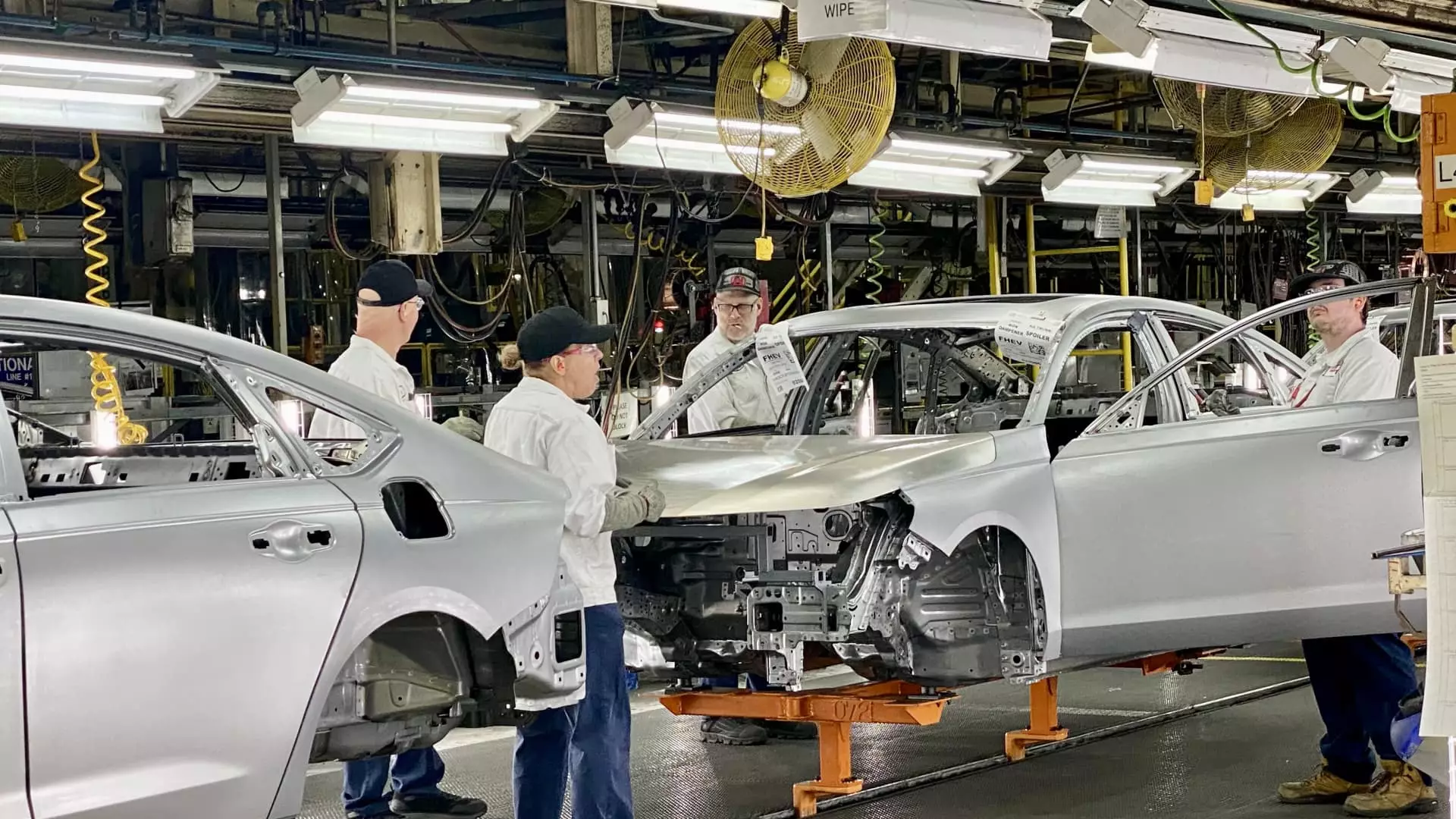In a groundbreaking shift that resonates throughout the automotive industry, Honda Motor Co. is redefining its manufacturing strategies with significant investments in Ohio, a location that has long been a hub for automotive production in the United States. The Japanese automaker, which has established itself as a leader in vehicle manufacturing over the last 75 years, is injecting over $1 billion into upgrading its facilities ahead of an impending transition to electric vehicle (EV) production. This initiative marks a notable departure from the company’s traditional practice of innovating first in Japan before expanding globally.
At the heart of Honda’s reinvention in Ohio are six state-of-the-art “giga presses” adapted from Tesla’s manufacturing techniques. These colossal machines, renowned for their capability to produce large vehicle components via high-pressure die casting, are expected to revolutionize Honda’s production processes. By allowing the creation of individual modules rather than assembling numerous smaller parts, these presses promise to streamline production, reduce costs, and mitigate waste, aligning with Honda’s commitment to environmental stewardship.
Furthermore, these advancements detail a shift towards high-volume, efficient production. Traditionally, manufacturing automobiles required numerous welding processes; however, with the incorporation of the gigapress technology, Honda aims to simplify this workflow, enhancing both speed and precision.
Building an EV Hub
The establishment of an EV manufacturing hub in Ohio represents a focal point in Honda’s future strategy. This facility is designed to handle a broad spectrum of vehicle types—including conventional gasoline engines, hybrids, and fully electric models—on a single assembly line. Such versatility is crucial as automobile manufacturers navigate the complexities of transitioning to greener technologies while meeting diverse consumer demands.
During a recent tour of the Marysville Auto Plant, where significant changes are underway, Honda executives emphasized the site’s role as the cornerstone of Honda’s global manufacturing operations. This initiative not only strengthens Honda’s foothold in the competitive EV market but also aligns with broader governmental efforts to reshore manufacturing capabilities in response to global supply chain vulnerabilities.
Despite its ambitious plans, Honda has historically lagged behind its competitors in the EV sector. While it currently relies on General Motors for the production of two all-electric crossovers—the Honda Prologue and Acura ZDX—its upcoming EV offerings, including the all-electric Acura RSX crossover, signal a pivot toward self-reliance in manufacturing electric models. This shift is critical as automakers compete for market share in a rapidly evolving landscape increasingly dominated by electric vehicles.
As part of its comprehensive strategy, Honda’s production in Ohio will expand to approximately 220,000 vehicles per year, a move that showcases the company’s intention to not merely participate in the evolving automotive market but to lead it.
In addition to installing the gigapress machines, Honda is implementing innovative production techniques to enhance environmental responsibility. This includes the development of flexible manufacturing cells tailored for battery assembly, which will allow for more efficient integration of battery packs and cells, thus minimizing potential production bottlenecks. By adopting a parallel assembly approach rather than a linear one, Honda seeks to improve overall operational efficiency while maintaining high standards for quality.
Tim Stroh, the project leader for EV battery cases, highlighted the importance of establishing a “large aluminum production technology” to ensure sustainable practices throughout Honda’s manufacturing network. This approach underscores the company’s commitment to reusability and recycling within its manufacturing processes, aligning with longer-term sustainability goals.
Honda’s aggressive push towards electric vehicle production encapsulates its ambition to achieve carbon neutrality by 2050, complemented by the expectation to exclusively offer zero-emission vehicles by 2040. This vision contrasts sharply with some competitors that have retreated from stringent targets in the face of market challenges. Such resolute commitments signal not only Honda’s future operational strategies but also its intention to foster broader industry standards for sustainability.
Honda’s multi-faceted reimagining of its manufacturing landscape in Ohio marks a watershed moment in the company’s history. By embracing innovative technologies and rethinking operational frameworks, Honda is positioning itself as a key player in the future of sustainable automotive manufacturing. As the industry evolves, Honda’s Ohio investments embody a proactive response to emerging challenges, underscoring the changing nature of automotive production in the 21st century.

